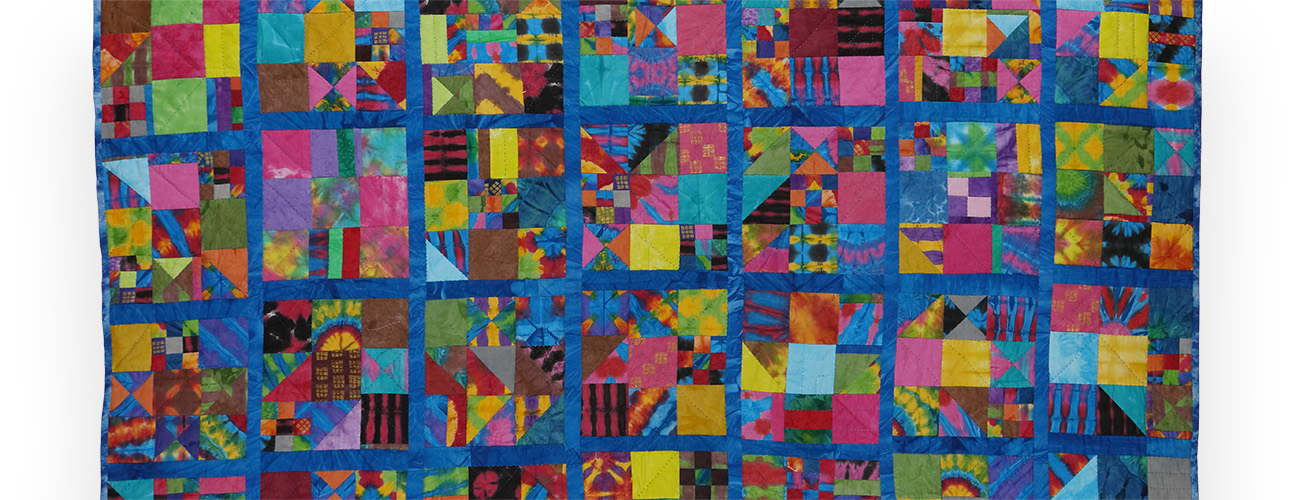Marquetta Johnson
How can quilts made by Black women change the way we tell the history of abstract art?
Marquetta Johnson (American, born 1955), Nine Patch (detail), 2016–2018, hand-dyed and hand-painted cotton fabric, 108 × 90 inches, High Museum of Art, Atlanta, gift of the artist, 2022.204. © Marquetta Johnson.
Some might think of abstract art as colorful surfaces assembled in a certain order, created in a free and seemingly random way to express and evoke feelings rather than provide a narrative. Many quilts made by Black women during the eighteenth through the twenty-first century can be described in a similar manner. Often their quilts are born out of necessity and lovingly created with lines, shapes, and colors meant to add beauty and visual excitement. Whether made from old clothes, flour sacks, scraps, or treasured yardage, African American quilts are varied and embody patterning in both free and precise ways. This aligns with the basic intent of artists engaged in abstraction—to create a mood, a feeling, a tone.
Historically, Black women have created quilted objects and quilts in many styles of Africa and throughout the diaspora without being included in any classification or without an attempt to name what they were doing. Quilts were made for practical and decorative purposes, mostly relegated to the bedroom and not seen as “fine art.” Most quilters saw themselves as creatives but were not considered artists in the wider world. Black quilters rarely had access to art collectors or opportunities to promote their work in art circles. Although they were creating work on par with the painters and sculptors of their era, racism, biases, and marginalization kept their artwork hidden.
In the 1990s, as artists and art lovers became aware of and inspired by the dynamic visual beauty of African American quilts, the rest of the art world began to take notice. The opportunities for Black quilters to show their artwork increased, and conversation about their quilts came out of the bedroom and into galleries, museums, and private collections. And as focus on their artwork increased, the desire to categorize them increased. Because most Black quilters had no formal art training, their work was seen as “folk art.”
In the evolution of art making, people have focused more on content and less on materials, giving status to some and less importance to others. Stretched, primed canvas in a square or rectangular format came to be seen as “High art” and given preeminence over artworks created out of fabric. Quilts were marginalized and considered mere craft, despite embodying an imaginative visual language. With a deeper analysis of the way Black quilters use line, shape, color, texture, and form, their quilts can be categorized more fluidly and seen as their own form of abstract art, created with textiles instead of paint and canvas. Indeed, many abstract artists have used quilt patterns as source material for their drawings and paintings. For instance, the work of Gee’s Bend quilter Annie Mae Young was considered less important than that of such artists as Mark Rothko, despite many of her works being in a similar style.
If included in the canons of art history that emanate from abstract art of the eighteenth century and beyond, quilts created by Black women could add to the variety of abstract art, exhibiting similar characteristics but focusing on creative expression instead of imagery. The door has been opened. A new day of inclusiveness has arrived. Black women quilters can hold their own in the world of abstraction using fabric, needles, and thread. Let them in. Let them be free to express their creativity without rules and constraints. Consider them abstractionists in the true sense of the word, and keep moving them forward—appreciated and acknowledged.
